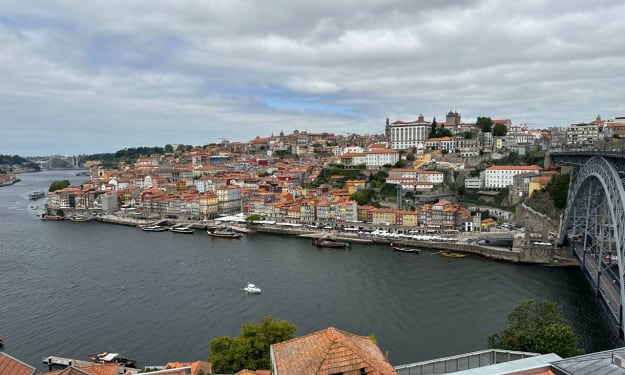Sopron at the Foot of the Alps
A lovely city in Hungary

Sopron a lovely city in Hungary is located on the western border. It sort of creates a bridge between Hungary and its western neighbors.

At the northern end of the Main Square is the Firewatch Tower, which counts as Sopron's symbol. This round-shaped tower was built on the remains of the Roman age town wall. You can see a double-headed eagle on the tower, a gift from King Ferdinand II and Queen Eleonora. There is a Baroque balcony and a helm roof. After climbing up a spiral staircase of 200 steps from the balcony, one can get a fantastic view of this historic city.

On the southern side of the Firewatch Tower, you can find the "Gate of Faith," which is the symbol of this city, made in memory of the referendum of 1921.

Sopron has become a holiday resort being so close to Lake Ferto and Lake Neusied and surrounded by a natural environment of wooded hillsides and mountain springs.

The hilly area found south of the city known as the Loverek offers visitors strolls in lovely forests with oaks, chestnuts, spruces, beautiful lilies of the valley and cyclamens, hiking paths, and lookout towers for incredible views. Sopron is in a wine-growing region, so it features excellent wines, and visitors can visit the different wineries here.

Goat Church was built by the Franciscan order, who founded their monastery in the center of town in about 1280. The church they built became known as "the goat church," a great example of Hungarian Gothic architecture. Benedictine monks took over when the Franciscan monastic order was dissolved in 1787. The church became the place for coronations and parliamentary sessions. The Goat Church has an incredible tower making it one of the most impressive buildings on the Main Square. Visitors can delight in the masterpieces of Fresco artists and other artists; view the lancet windows and the unusual Capistran pulpit.

The late Baroque door of the Benedictine Monastery next door leads one to the Chapter House, which displays beautiful works of early Gothic religious architecture. At first, it was a prayer house, then a burial chapel, and later became a Loretto chapel. During archaeological excavations, Gothic pillars were unveiled. One can see masks and figures with human heads and animal bodies hidden within the leaf ornaments of these pillars, representing the seven original sins.

Visitors will find the Szent Michael Church at the highest point in Sopron. This is the oldest church in the city and is dedicated to St. Michael. It was initially Romanesque but was later reconstructed in the Gothic style. The neo-Gothic altar was designed by the restorer Ferenc Storno. It is fascinating to see the tower's lancet windows and the steeple's round balcony. Visitors can see preserved 15th-century statues and fragments of wall paintings inside the church. There is an impressive wooden Madonna that was carved about 1460-1470. Out in the churchyard, the earliest gravestones date back to the 17th century, and some are in the late Renaissance style.

Don’t miss a chance to see Fabricius House from the 17th century. Fascinating is the Gothic Hall, as is the loggia in the courtyard and the Gothic and Baroque cellars at the rear of this building. Archeologists uncovered a Roman bath in the basement. This house was named after its owner, Endre Fabricius, the mayor, and the magistrate. Today this building features three exhibitions – a Roman lapidarium in the basement and an archeological exhibition, “Three-thousand years on the Amber Road,” which is seen on two floors at the back of the house. Rooms on the first and second floors at the front feature 17th and 18th-century burgher homes with furniture and objects from that time.

Of great interest is the Storno-House, a Baroque corner house with bay windows and is one of the most attractive houses on the Main Square. In 1840 and 1881 composer Franz Liszt gave two concerts here. The richly decorated bay windows are among the highlights here. The arched doorway has the Festetic family’s coat of arms between two Tuscan half pillars and the door knockers with pelican motives. In the 15th century Sopron’s first pharmacy the Black Elephant operated here. On the first floor is a local history exhibition and the second floor has a 19th-century art and furniture collection on display.

At one time Ursula Square was the salt market in medieval times, and later slaughterhouses stood there. The Ursuline order instituted a convent and school and built a church on the square. The two-story building found here today dates back to 1860 created by architect Nandor Handler. In the oratory of the convent, you’ll find the Roman Catholic Ecclesiastical Art Collection. In the middle of the square is the Fountain of Mary, a present of atonement by citizens to the Franciscan order.

Don’t pass up a chance to visit this marvelous city. There is so much more to do and see like taking cruises upon Lake Neusied.
About the Creator
Rasma Raisters
My passions are writing and creating poetry. I write for several sites online and have four themed blogs on Wordpress. Please follow me on Twitter.






Comments
There are no comments for this story
Be the first to respond and start the conversation.